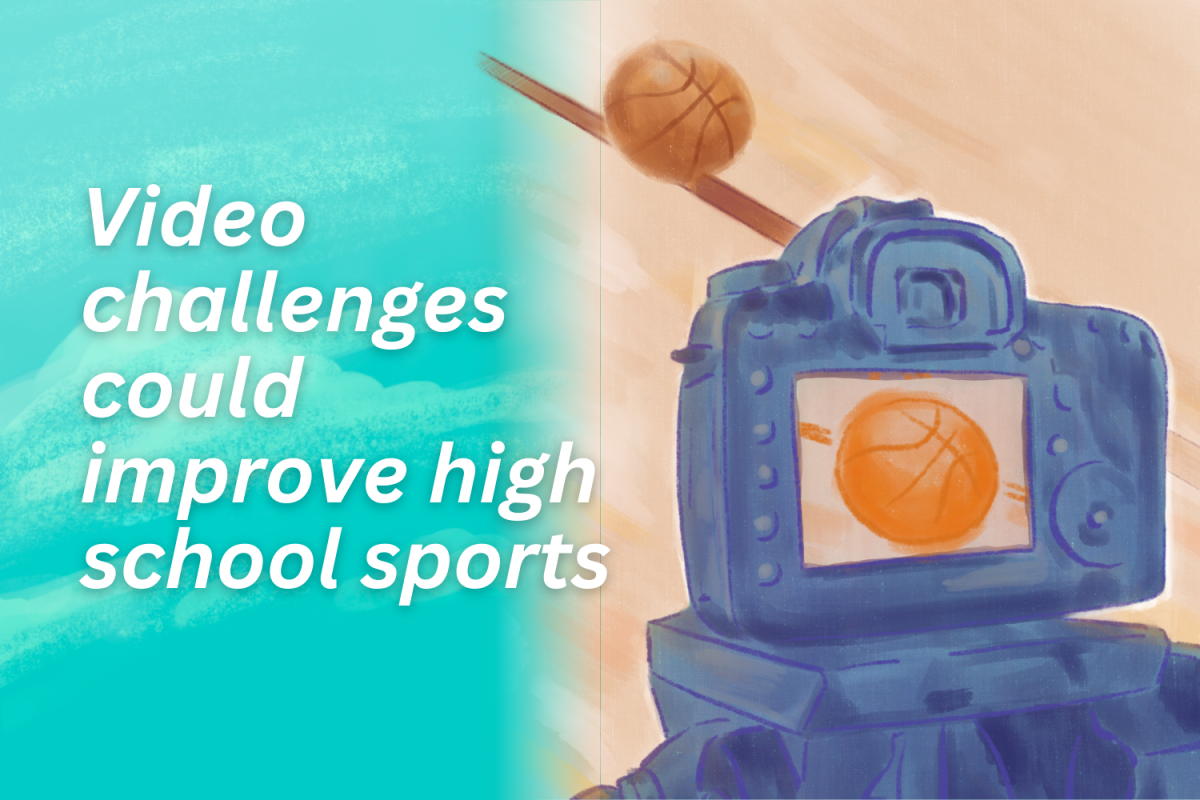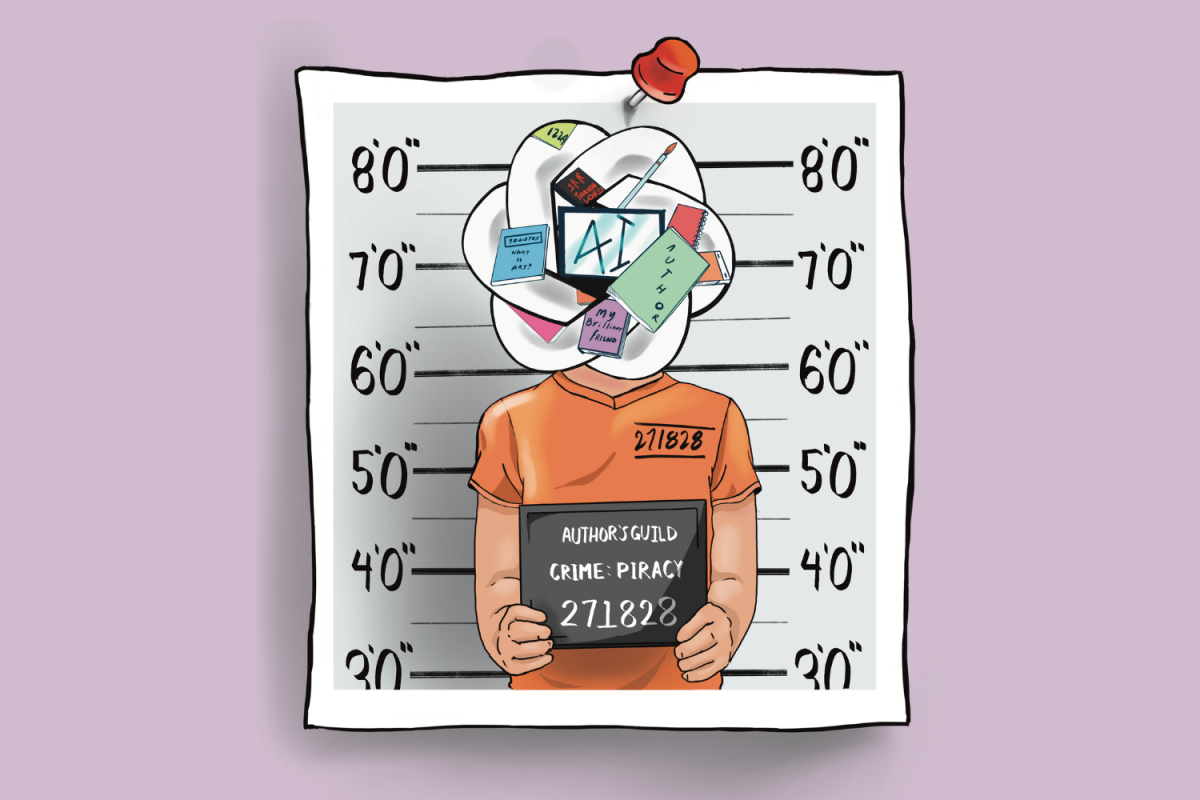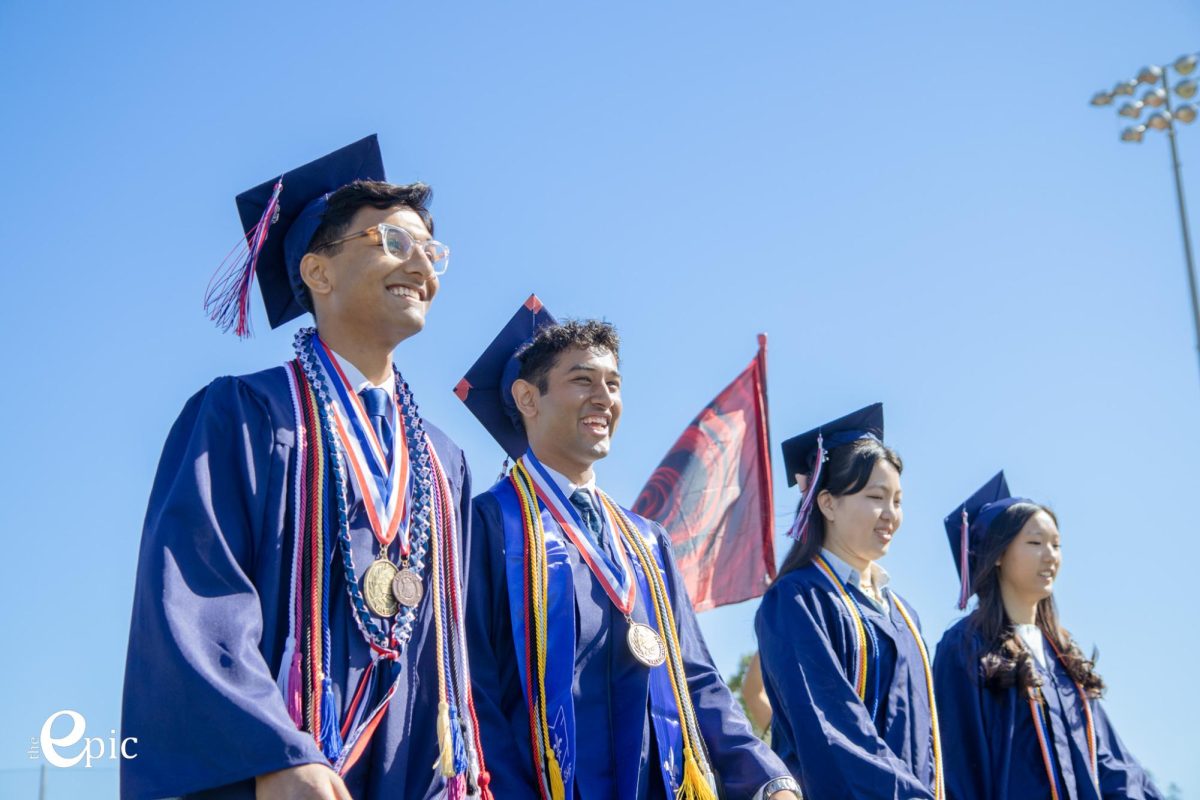As the clock ticked down in the final quarter, the tension in the gym was palpable. The Vikings were locked in a fierce battle against Silver Creek High School, being only 2 points behind. With just 3 seconds left, it all came down to one last possession. The Vikings caught the inbound pass, taking a dribble and shooting a shot from half court. Projecting a perfect parabola, the ball hit the backboard and dropped through the net. At the same time, one of the assistant basketball coaches noticed something unusual with the game clock: the scoreboard operator never started it. Should the Vikings get the scores or not? Although the referees ruled in favor of the Vikings, nobody could erase unease and dissatisfaction. Thankfully, AP Government teacher Jeffrey Bale, one of the JV boys basketball coaches, was filming the game for future practices. He stepped in and reviewed the game videos, calculating the game time.
“The shot was clearly released in time but we felt terrible as the coaches,” Bale said. “So, I went back with the video evidence we had and showed them that the shot was in fact released with one-tenth of a second left. It was nice to have confirmation that the right team had won the game.”
In order to combat controversial situations like this one, high school sports associations should allow referees to review footage during and after games. Buzzer beaters, by their very nature, occur in the blink of an eye, leaving room for error in officiating. In the heat of the moment, referees may struggle to observe what exactly happened, occasionally leading them to make incorrect judgments. These split-second decisions can sway the outcome of the game and have lasting effects on the teams involved. Therefore, for a more accurate assessment of a game, referees should be permitted to access footage during and after the game in high school.
First introduced in 1986 to professional football officiating, video reply has been commonly used to confirm correct rulings or overturn incorrect calls in college and professional sports. According to the National Basketball Association Official Rulebook Rule No. 13 and 14, a field goal made or a foul called with no time remaining on the clock at the end of any period can trigger instant video replay. In addition, teams are allowed to initiate instant replay reviews, or challenges, for events including a called personal foul against their own team, a called out-of-bounds violation or a called goaltending or basket interference violation. However, this is not the case in high school sports. In similar situations, typically, two or three referees present in the game have discussion and come up with agreed decisions. After their decisions are announced, it cannot be overruled.
“From this season, at one of our tournaments, we got called for a foul in the last 10 seconds,” varsity girls basketball co-captain Maggie Lam said. “Eventually, the other team got to shoot free throws and that’s the main reason why they won the game. With video challenges, referees probably would have reversed the foul call and we could play the game out instead of giving the other team free points.”
The instant replay should be allowed in high school sports games as well because it will enhance the accuracy of referees’ decisions. On average, referees and match officials make around three to four decisions per minute and over 130 explicit decisions per match. As a referee’s control over the game increases, the scrutiny of the referee’s performance continues to grow, which leads to more pressure on referees to make split-second decisions. Reviewing the footage offers referees a better understanding of game situations, which, in turn, reduces the pressure on referees and allows them to make more accurate calls.
Furthermore, accessing video footage during a game can improve the fairness of the game — ensuring that the game is played on a level playing field and that players compete to the best of their abilities. Additionally, increasing the fairness of the game promotes mutual respect and sportsmanship among players and encourages positive interaction between players. Therefore, fairness is one of the most important values emphasized more in high school sports and for young athletes.
“In sports, every single point is important to win a game,” sophomore and varsity girls volleyball player Chelsea Li said. “Therefore, fairness in sports is essential to ensure that every point players earn holds true value and I think video challenges would be really helpful to keep the game fair.”
Since viewing footage encourages referees to make decisions based on objective evidence, rather than their subjective interpretations, the officiating process becomes more transparent and enables referees to build trust with players and coaches. In addition, decisions based on footage may reduce the controversy around calls and give results that both teams can accept. In situations like the game against Silver Creek, video challenges can easily erase the controversy around the referees’ decisions because footage can support the referees’ judgment.
“It keeps referees accountable,” varsity boys basketball head coach Rick Appler said. “With the ability to challenge a play, you can have a second look at something that you would have never otherwise had a chance to do. It’s definitely something that I have dreamt of and wished we had but never had the opportunity to.”
Video challenges can also increase consistency in officiating, which is crucial for upholding the credibility of sports competitions and enhancing the integrity of the game. In the 2002 Western Conference Finals, Game 4 between the Sacramento Kings and Los Angeles Lakers happened on May 26, 2002. At the end of halftime, Samaki Walker from the Lakers made a 3-pointer at the end of halftime. Although television replays showed Walker had released the ball after the buzzer went off, the shot was counted and it allowed the Lakers to close the score gap to 65-51. The Lakers eventually won the game 100-99, advancing to the finals. The following season, the NBA instituted instant replay for review.
“Video challenges have a place but a very limited place in my opinion,” Bale said. “They have the most meaningful effect in playoffs but the vast percentage of games go on without any real controversy that needs additional resources and officials. Also, there has never been a game where I have said the officials were the reason we lost the game or won the game. There are too many variables and I don’t think video challenges will change the outcome of any game in a meaningful way. In addition, it would slow the game down too much, disrupting the flow of the game.”
However, even in regular-season matchups, crucial moments can arise where a video challenge could rectify a potential incorrect call that could have significantly affected the game’s result. Also, it is undeniable that officiating errors can occasionally occur and directly impact the result, particularly in playoff games or foul calls. Therefore, leveraging resources that are already available, such as an automated camera system in the gym, Lynbrook can greatly enhance transparency and accountability in sports with little input. Also, other concerns can be easily addressed through carefully implementing and imposing regulations like limiting the number of challenges per team or having the time limit on the review process. By incorporating these measures, video challenges can enhance the accuracy of decision-making while minimizing any negative impacts on the pace and integrity of the game.
“Controversial calls by the referees make everyone on the bench angry,” Li said. “The implementation of video challenges will not only prevent future misunderstandings but will also allow everyone to leave the gym without regret.”

































































